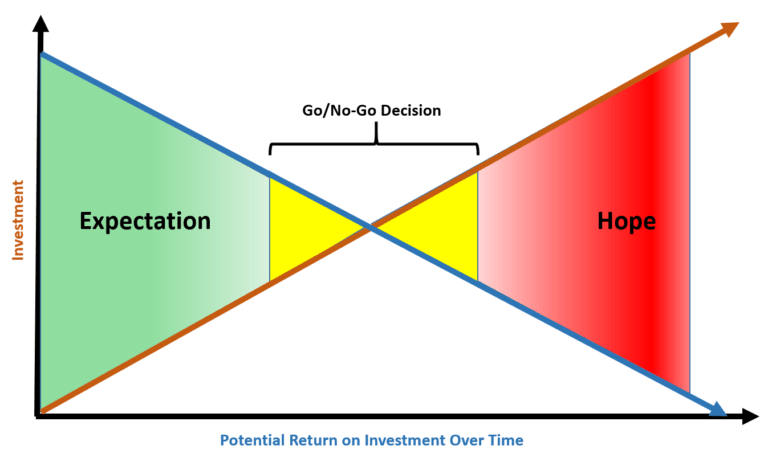Five leadership styles behind the success of giant MNCs
Dr. Amal Farouk Soliman
Honorary Board member of the American Academy of Project management
Prof. Joseph F Paris Jr
Chairman of XONITEK Consulting Group Int’l; Founder of the Operational Excellence Society; Founder of the Readiness Institute; and Author of “State of Readiness”.
Ceridian is as an information services company. And, according to its CEO, David Ossip; “… Negative employee attitudes can harm workplace culture, impacting morale and employee engagement, and may also result in a ripple effect of unhappy customers.” Mr. Ossip recognized this problem and its being a threat to the business. He made use of his skilled and purposeful leadership with a deep understanding of what is required to engage people and satisfy customers. He accomplished this, in part, by incorporated an app into the payroll and benefits to capture the entire employee experience.
How did we make the connection between a payroll and benefits app to track employee experience and Leadership?
Leadership is one of the main factors in bringing positive change to organizations; if there is no leadership in the organizations, they will not be able to change in the direction desired and they could experience negative change instead (Hao and Yazdanifard, 2015). Leadership can facilitate change in organizations through improvement and innovation. The leader should have the ability to influence and cause a change the in the values, beliefs, behavior, and attitudes of another person (Ganta, and Manukonda, 2014).
The leader should have the ability to influence and cause a change in the values, beliefs, behavior, and attitudes of another person (Ganta, and Manukonda, 2014). A person with strong leadership ability will be a good example or role model to his/her employees. Northhouse (2009) added that leaders with strong leadership skills lead their employees to commit to their jobs. Wasim and Imran (2010) added that leadership supports working as a group to achieve the organisation’s goals and objectives.
Innovation is the vehicle of this mainly digital transformation era. How do leadership styles affect innovation and enhance digital transformation? Which leadership style supports more innovation and digital transformation? How this can help entrepreneurs to run their business more effectively? This article tries to provide answers to these questions.
Leadership styles are of major importance for any organisation management specifically during change management and innovation management. The new classification of leadership styles clarified five leadership styles. These leadership styles include; transformational leadership, transactional leadership, visionary leadership, charismatic leadership, and culture-based leadership.
Transformational leadership plays a great role during the innovation process since it increases openness, creativity, and empowerment among sub-ordinates more than transactional leadership. This in turn increases the organization’s innovation and constitutes a great challenge especially in starting up companies or during the times of transformation. The role of transformational leadership is the willingness to make more risky decisions and take actions that aren’t in the mainstream, using transparency and open communication with sub-ordinates to ensure that they are accountable for their behaviors, being optimistic and letting his/her sub-ordinates have a positive attitude in order to succeed, and being nimble as an organization. A transformational leader keeps in mind that optimism is a planned behavior which starts with proper preparation and diligence. This preparation leads to knowledge. That knowledge leads to confidence. And confidence leads to success. Furthermore, if you act with agility, you will be better prepared to see and meet new challenges. This can let you and your team achieve success. Whether you’re the head of a startup or you’re a seasoned entrepreneur, it’s never too late to use successful transformational leadership examples to boost the success of your own business.
In 1962, H. Ross Perot established Electronic Data transfer (EDS). He applied such a leadership style and empowered employees to rapidly respond to his customers and eliminating potential barriers.
And in 1984, Perot sold EDS to GM for $2.6 billion. Separately, in 1994, under Jeff Bezos’sleadership, Amazon grew from modest beginnings selling books online into a commercial giant that sells almost everything imaginable. By disrupting the traditional business model of bookselling, Amazon had reached a value of more than $900 billion in July, 2018 (Rueters, 2018).
Many people would like to know and understand how these leaders were able to transform their organisations. These leaders both; allowed quick formulation of a vision for improvement and growth, promoted enthusiasm to drive their companies through innovation to challenge traditional business models, they made use of their passion to sell their vision, and they optimized their sub-ordinates performance by getting them aligned to a shared vision. This occurred by the leaders encouraging their sub-ordinates to focus on the interests and needs of the team and the organization as a whole rather than their individual interests. These leaders especially took the time to recognize the accomplishments of their employees to improve their organizational excellence and their societal commitment. We can call them “selling leaders” since they are proactive and prioritize their groups progress.
In contrast, the second style of leadership, transactional leadership (sometimes referred to as “telling leadership”), depends on self-motivated people who work well in a structured and directed environment. However, these leaders differ from transformational leaders since they focus on managing the performance of the individual and determining how well he or she performs in a structured environment. They are reactive and appeal to the self-interest of their sub-ordinates and they set expectations and reward workers for meeting them. Bill Gates is an example of a leader who used this style of leadership. He started Microsoft with Paul Allen. By 1978 they were two of the wealthiest people in the world. For example, Gates used to visit new product teams and ask difficult questions until he was satisfied that the teams were on track and understood the goal.
In 1982, Howard Schultz was hired by Starbucks as an employee. In 1984, Schultz opened the first Starbucks coffee house based on the concept of an Italian espresso bar. Schultz wanted to grow Starbucks but the owners did not share that vision. So Schultz established his own business in 1985 and then bought Starbucks in 1987. He spent very little money on marketing and more money on training his company employees. He emphasized that everyone must know exactly what is required of them and how a task is to be done under pressure. In addition, he depended on rewarding employees for successful achievement as a way of their motivation.
The third style of leadership is charismatic leadership. This leadership style depends on the charisma of the leader as the primary driver in; motivating staff, gaining support, generating results, and improving the work environment. Nelson Mandela was one of these types of leaders and he inspired his sub-ordinates by getting them to focus on long-term results rather than short-term ones.
The fourth leadership style is visionary leadership; which had been considered by some authors as part of the charisma of the leader. However, visionary leaders are leaders who help their sub-ordinates to see the big picture and look beyond their day-to-day challenges through their vision which keeps them focused and dedicated to their success. So, the challenge is the vision of the entrepreneurship combined with good communication skills. Risk-taking visionary leaders are notable. Tom Watson used this style by embodying IBM culture in his decisions when he was its leader (Richard E. Hattwick, 1987).
The fifth and last leadership style we will consider here, and which had not been considered a lot by researchers in spite of its importance, is culture-based leadership. Leadership styles vary from one culture to another. Definitions and perceptions of leadership vary considerably from one business organization’s culture to another. Executives are themselves products of the unique cultures in which they have learned and conducted business. This is because the managerial practices and motivational techniques that are legitimate and acceptable in one business and its culture may not be the same as in another.
For example, many attributes associated with charisma are contributing to outstanding leadership, but the term “charisma” invokes ambivalence in several countries. There is concern in some cultures that people tend to lose their balance and perspective as a result of an excessive focus on achievement created by charismatic leaders. Successful businesses are those who not only understand the cultural difference, but also train their executives to lead in ways that demonstrate an understanding for their distinct cultures.
For example, Kentucky Fried Chicken (KFC) built a leading 40% share of the fast food market in China through tailoring its product offering to local tastes and building a strong team of local managers. Considering cultural diversity within many countries’ own borders could be highly effective in driving product and service innovation, in that it is important to attract and retain the most promising talent for their operations. To accomplish this, you should focus on your recruiting efforts on bringing diverse and multicultural candidates into the company. Furthermore, you should adjust the employer branding messages, diversify recruiting talent resources, and adjust selection criteria to reward multicultural experience. Additionally, you should enhance the leadership capability by obtaining multicultural experiences through revising the career path conversations and performance reviews. Moreover, giving managers structured mobility programs to expose them to different cultures and geographies on both short-term projects and medium-term rotations is necessary and you should integrate multicultural insights into business decisions and strategy.
A lot of scholars correlated transformational leadership to innovation (Chen et al., 2016; Schuckert et al., 2018 ; Jia et al., 2018). From the discussion, do you think that culture based boosts innovation or not? If your answer is “Yes” this agrees with Tikas and Akhilesh (2017) and Villaluz et al. (2018) who argued that leadership has a strong role in building an innovation culture by ownership type; either directly or indirectly. They demonstrated that transformational leaders who favor the values of reinvention positively influence its adoption by having the ability to take advantage of both exploratory and exploitative innovation culture. This is also agreeing with my opinion regarding the role of culture-based leadership and transformational leadership in enhancing technology transfer effectiveness (Amal F.Soliman, 2016). Furthermore, visionary leadership has a great effect on technology transfer effectiveness. This is because visionary leaders help their sub-ordinates to see the big picture and look beyond their day to day challenges through their vision which keep them dedicated to their success. But, the challenge still exists since good communication skills are required. Recently, charismatic leadership exhibited more effect on technology transfer effectiveness rather than transactional leadership (Amal F.Soliman, 2016). Future research should investigate which has the greatest effect on technology transfer effectiveness or the success of e-preneurs transformational or transactional leadership.
References
https://www.ceridian.com/blog/five-tips-for-managers-to-handle-negative-attitude
Moo Jun Hao and Rashad Yazdanifard (2015). How Effective Leadership can Facilitate Change in Organizations through Improvement and Innovation. Global Journal of Management and Business Research: A Administration and Management 15 (9), pp.1-6.
Ganta, V. C. and Manukonda, J. K. (2014). Leadership During Change And Uncertainty In Organizations. International Journal of Organizational Behaviour & Management Perspectives, 3(3), 1183.
Northouse, P. G. (2009). Introduction to leadership: Concepts and practice. Thousand Oaks, CA: Sage Publications.
Wasim Abbas and Imran Asghar (2010). The role of leadership in organizational Change: Relating the Successful Organizational change to Visionary and Innovative Leadership. Master’s Thesis in Industrial Engineering and Management, University of Gavle, 1-53.
www.ithistory.org/db/companies/electronic-data-systems
www.coursehero.com › MGT
https://en.wikipedia.org/wiki/Jeff_Bezos
www.leadershipgeeks.com › Political Leaders
Richard E. Hattwick (1987). Tom Watson: Founder of IBM. Journal of Behavioral Economics, Volume 16 (1), 109-126.
https://astrumpeople.com/bill-gates–biography
https://hbr.org/2012/01/multicultural-leadership-starts-fr
Chen, L, Defoyd, E, Hetterich, A, Jeffords, P, Levine, B, Milligan, PA, Openshaw, J, Polovina, S and Schreuder, M 2016, When Women Thrive, Businesses Thrive: The World’s Most Comprehensive Research on Women in the Workplace, Mercer.
Schuckert, M., Kim, T. T., Paek, S., & Lee, G. (2018). Motivate to innovate: How authentic and transformational leaders influence employees’ psychological capital and service innovation behavior. International Journal of Contemporary Hospitality Management, 30(02), 776–796.
Jia, J, G Z Jin and L Wagman (2018).The short-run effects of GDPR on technology venture investment. NBER, Working Paper 25248.
Gaurav Dilip Tikas, Akhilesh K.B., (2017). Towards enhancing innovation capability of teams: a conceptual perspective. Team Performance Management: An International Journal, 23 (7/8), 352-36.
Vanessa C. Villaluz, Ma. Regina M. Hechanova, (2018) “Ownership and leadership in building an innovation culture”, Leadership & Organization Development Journal, https://doi.org/10.1108/LODJ-05-2018-0184.
https://www.ceridian.com/blog/five-tips-for-managers-to-handle-negative-attitude
by Amal Mohamed
 Amal is an experienced consultant with a demonstrated history of localization industry. Skilled in operations management , Marketing Management, Market Planning, Cross-functional Team Leadership, Market Analysis, and Management. Strong education professional graduated from PHD in Business Adminstration. Honorary Board member in the American Academy of Project management.
Amal is an experienced consultant with a demonstrated history of localization industry. Skilled in operations management , Marketing Management, Market Planning, Cross-functional Team Leadership, Market Analysis, and Management. Strong education professional graduated from PHD in Business Adminstration. Honorary Board member in the American Academy of Project management.






